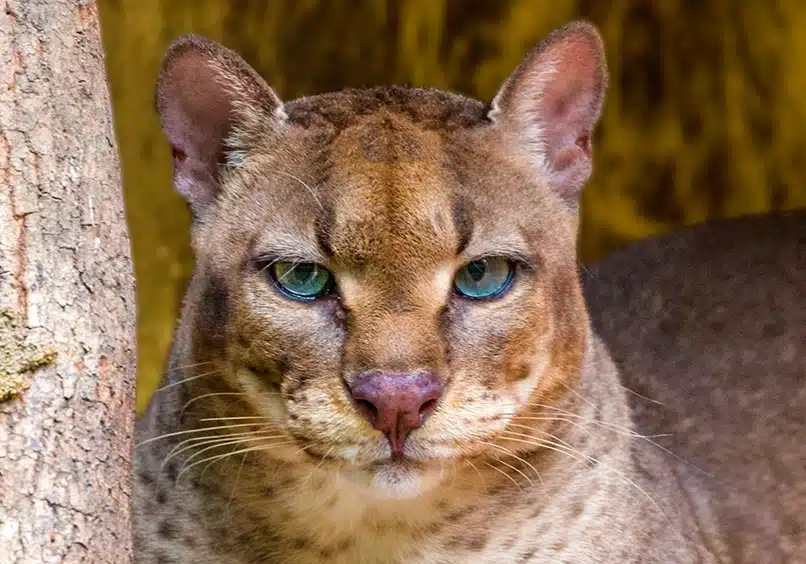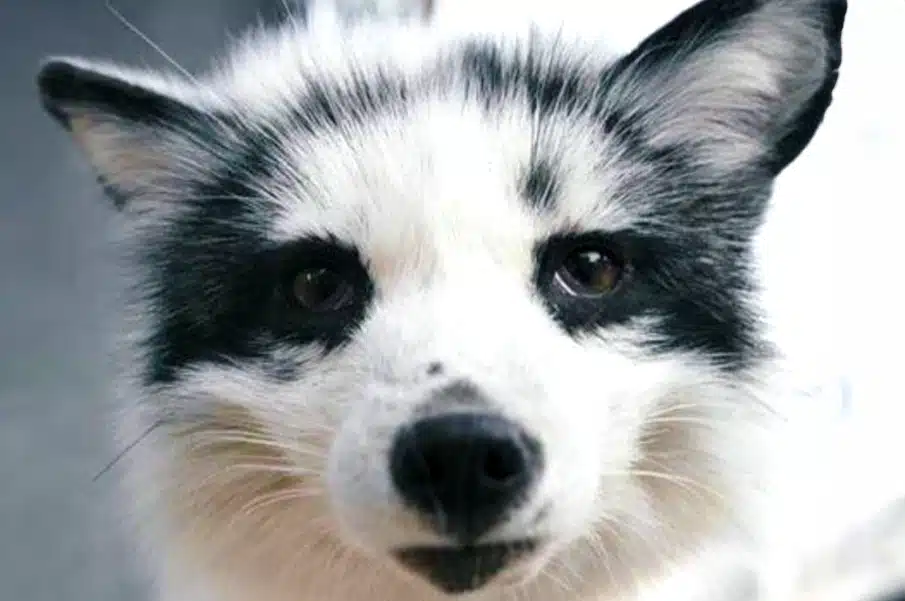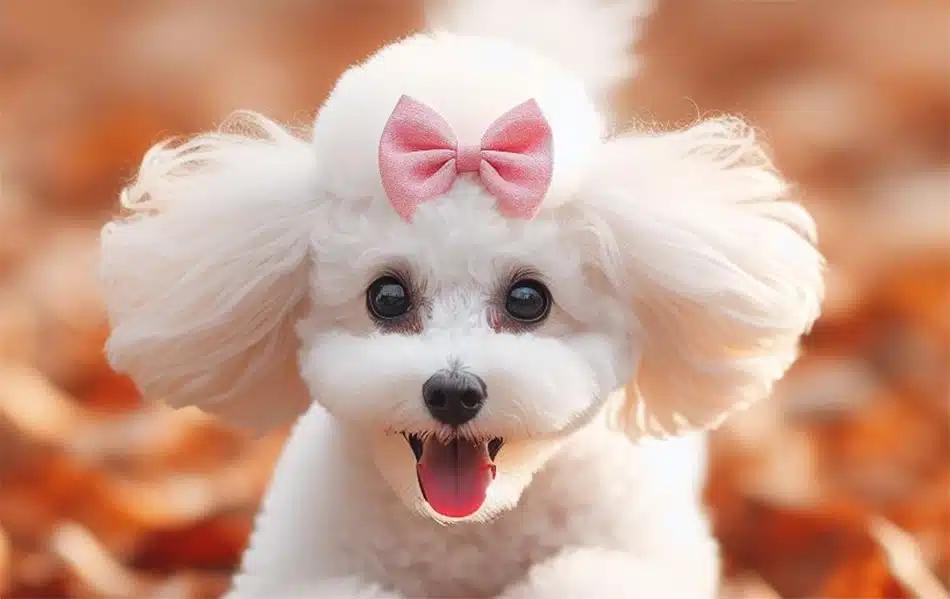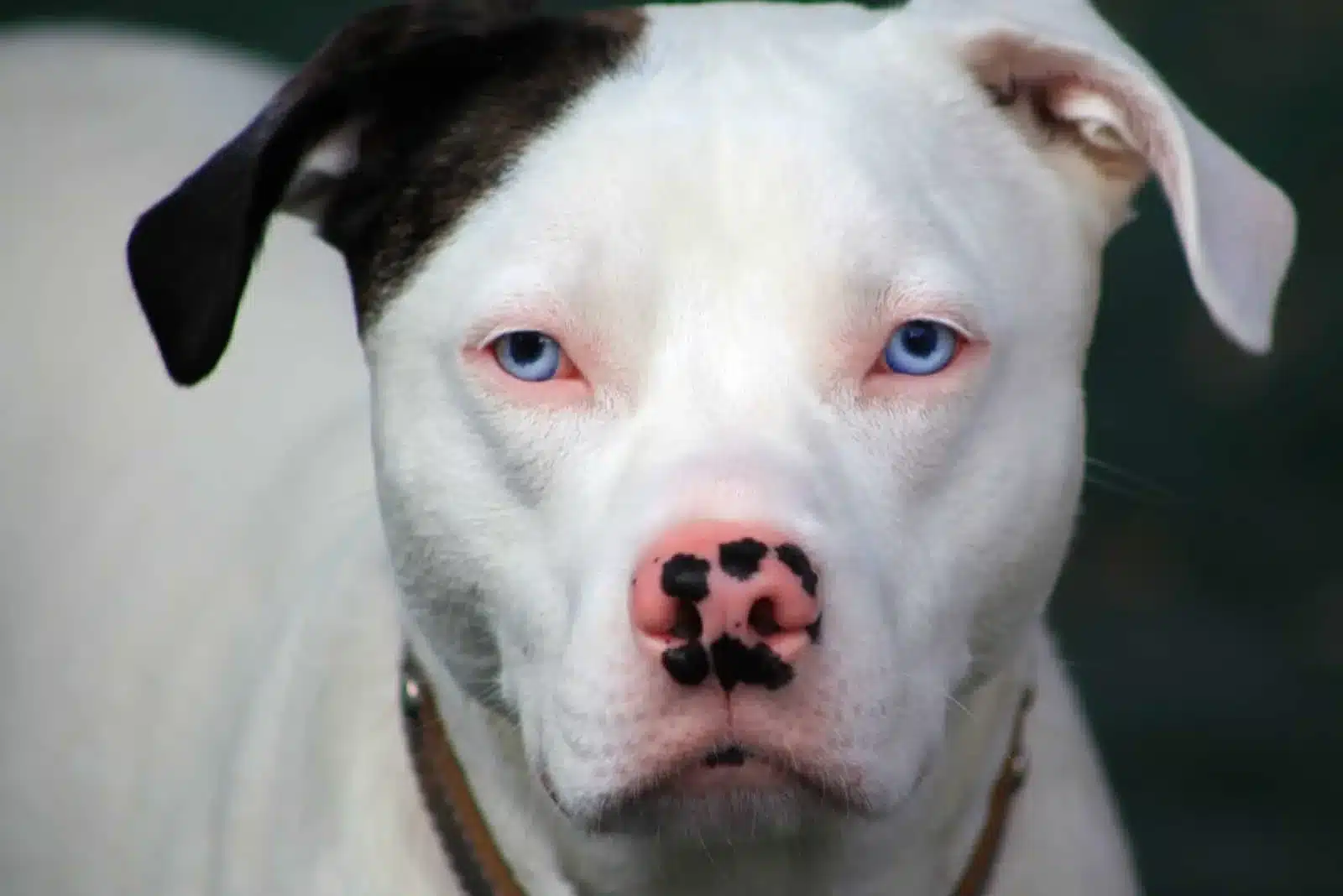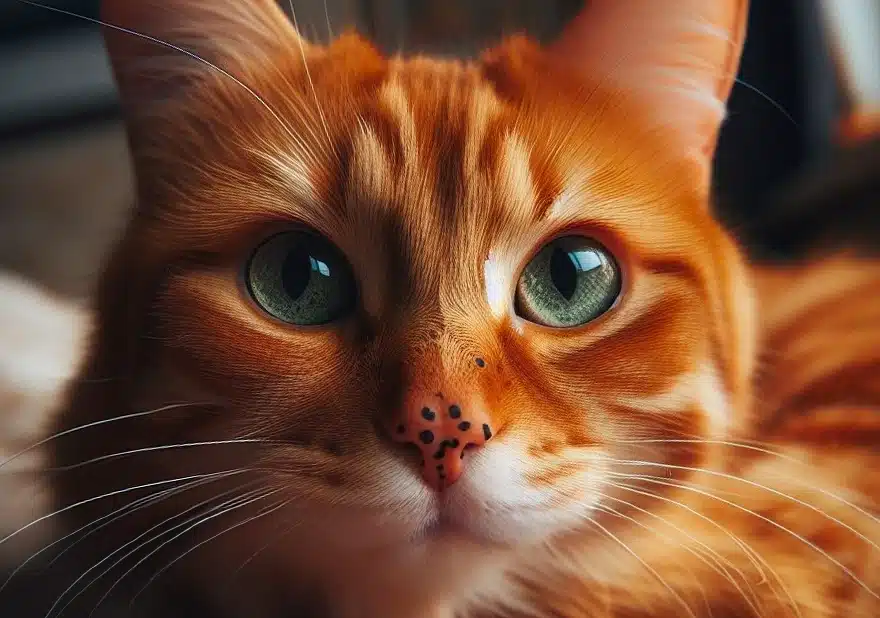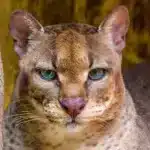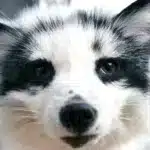Snow Lynx Bengal Cats: The Ultimate Guide To These Hybrid Cats
Ads Disclosure ?
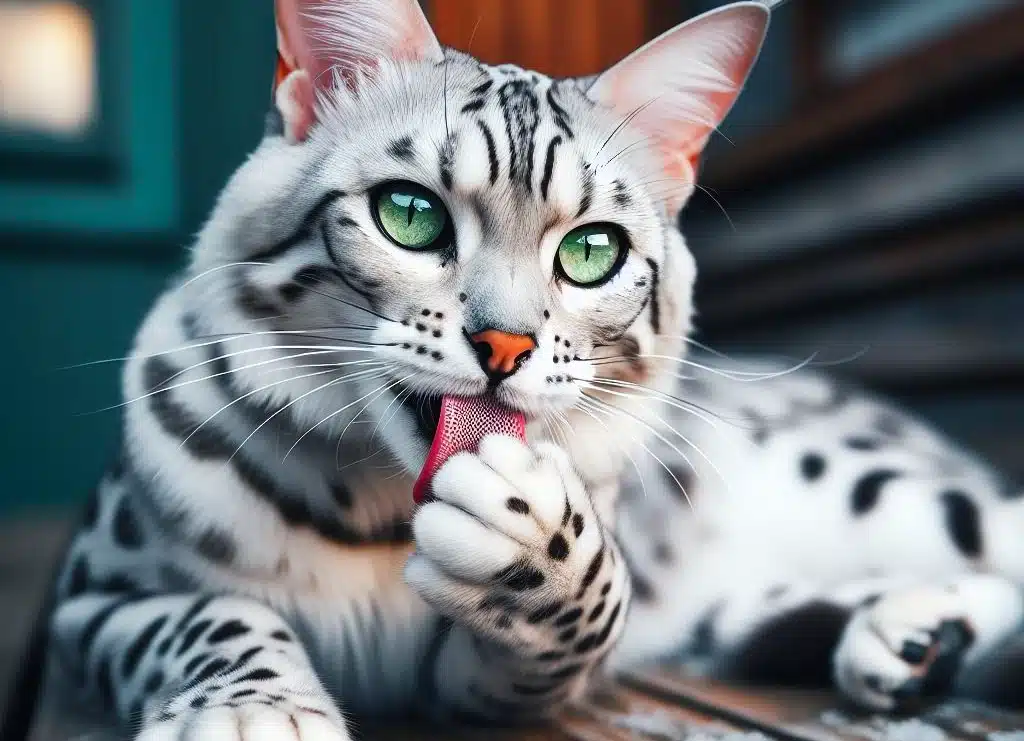
The Snow Lynx Bengal cat is an exquisite variation of the Bengal breed, distinguished by its unique coat that resembles the wild lynx. A product of selective breeding and hybridization, this feline combines the wild appearance of its larger ancestors with the tameness of a domestic cat. Their coats feature a pattern that emulates the cold, wintry landscapes after which they are named, making them a visual spectacle and a sought-after pet for feline enthusiasts.
With the striking contrast of pale fur adorned with distinctive darker markings, the Snow Lynx Bengal stands out among Bengal cats. Their characteristics are not just superficial; these cats are known for their playful and engaging personalities, fitting seamlessly into a dynamic household that welcomes an active companion. Unlike the wild lynx, Snow Lynx Bengals thrive on human interaction and are well adapted to living within the home environment.
Originating from a complex lineage that includes the recessive colorpoint genes carried by some domestic cats that were crossed with Bengals, the Snow Lynx Bengal carries a genetic legacy that is both fascinating and visually stunning. They reflect the careful breeding practices aimed at preserving the beauty of wild cats while ensuring the temperament suitable for a family pet. Despite their majestic appearance, these cats require the same level of care and attention as other Bengal cats and are well-suited for those who appreciate an interactive and affectionate member of their family.
Jump To Section
Origin and History
The Snow Bengal cat is a visually striking breed with a rich history rooted in both wild and domestic lineages.
Asian Leopard Cat Ancestry
The Bengal cat owes its exotic looks to its ancestor, the Asian Leopard Cat (ALC). This small wild feline inhabits regions across Asia and has been integral to the Bengal breed’s unique appearance. The ALC’s genealogy imparts the distinctive spotted and marbled coat patterns seen in Bengals. Their history of hybridization with the Asian Leopard Cat has been carefully documented by breed enthusiasts and contributes to the breed’s appeal, setting it apart from purely domestic felines.
Breed Development
The process to develop the Snow Bengal began with crossing the hybrid Bengal cat with Siamese cats, which introduced the recessive gene for a lighter coat. The Snow Lynx Bengal, or “Seal Lynxpoint,” emerged from this genetic mingling, marked by its lighter, almost white coat and contrasting patterns. Through selective breeding, this variation has been refined over the years.
The breed gained formal recognition by The International Cat Association (TICA), an acknowledgment that affirms the breed’s established standards and its place within the cat enthusiast community. Breeders have worked diligently to maintain both the look and health of the Snow Bengal, making it a coveted member in the world of felines.
Physical Characteristics
The Snow Lynx Bengal cat is distinguished by its unique and visually striking coat and eye features. They display a remarkable blend of colors and patterns reminiscent of their wild ancestors, and their eye colors add to their captivating appearance.
Coat Patterns and Colors
The Snow Lynx Bengal’s coat features patterns that can include bold spots or marbling, set against a lighter base coat color. These patterns are indicative of the Bengal’s wild heritage, drawing a parallel to the snow leopard. The array of coat colors for the Snow Lynx Bengal includes seal lynx point, seal mink, and seal sepia, each offering a variation in tone from a lighter, almost white, to warmer hues. A pink nose may accompany the coat, adding to their distinctive look. Some Snow Lynx Bengals also exhibit a silver sheen, contributing to their overall exotic and elegant demeanor.
Eye Colors and Shapes
The blue eyes of a Snow Lynx Bengal are one of their most enchanting traits. These eyes may range from a pale icy blue to a deep sapphire. The eye shape can either be large and round or slightly more almond-shaped, enhancing their expressive faces. In contrast, the seal sepia and snow sepia Bengal variants may have eyes that are green or golden, deviating from the blue typically seen in the lynx points. The overall effect of the eyes in conjunction with their striking coat is a captivating visual presence.
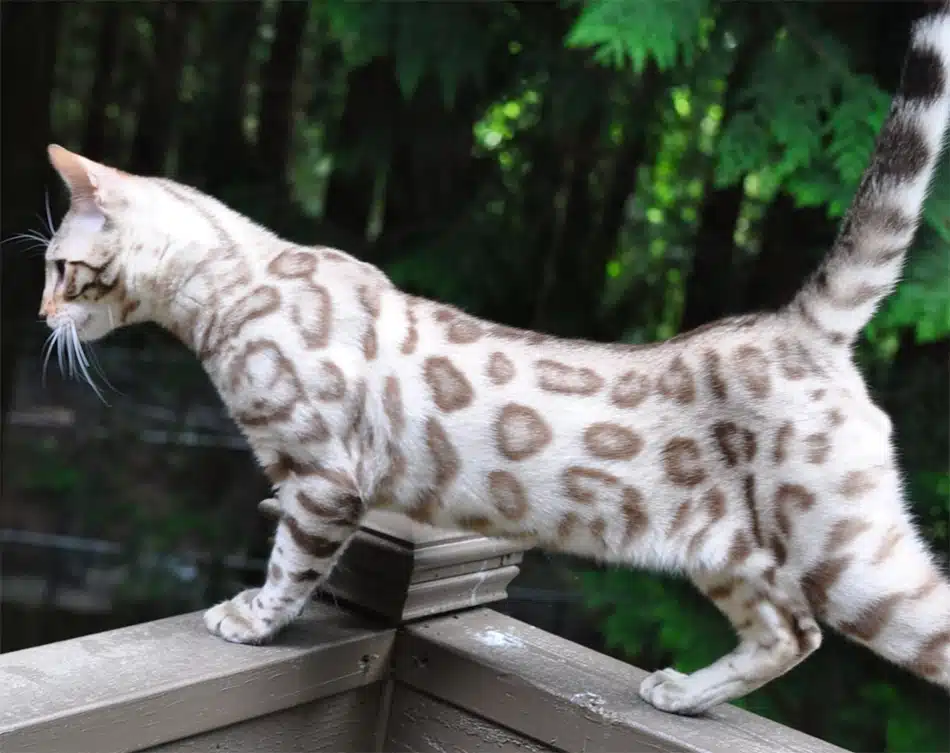
Genetics and Breed Variations
The genetics behind the Snow Bengal illustrate the complexity and intricacy of feline breeding. This section delves into the breed standards that define the Snow Bengal and the various subtypes that stem from its genetic diversity.
Breed Standards
TICA (The International Cat Association) sets the breed standards for Bengals, including the Snow Bengal. These standards dictate the physical traits that distinguish this breed, such as coat color, pattern, body type, and temperament. A Bengal’s generation, or filial number, indicates its distance from wild ancestors and affects its compliance with breed standards.
Snow Bengal Subtypes
The Snow Bengal category is divided into three distinct color patterns, each with unique genetic markers:
- Snow Sepia (CB/CB) – This subtype has the darkest fur of the snow varieties. Its genetic composition includes two copies of the Burmese gene (CB).
- Snow Mink (CS/CB) – The Snow Mink is intermediate in tone between the Snow Sepia and the Seal Lynx Point. A Snow Mink must receive one gene for Siamese (CS) from one parent and one for Burmese (CB) from the other.
- Seal Lynx Point (CS/CS) – Possessing the lightest coat, this pattern is caused by two copies of the color-point gene (CS) that result in a high contrast pattern and typically vivid blue eyes.
Each genetic combination influences the appearance and distinguishing characteristics of the Snow Bengal cats. These subtypes demonstrate the array of genetic possibilities within this singular cat breed.
Personality and Temperament
The Snow Lynx Bengal is recognized for its distinctive personality, combining high energy, intelligent behavior, and a playful nature. They exhibit a notable prey drive, making them an engaging companion for active families.
Behavioral Traits
Snow Lynx Bengals are intelligent cats, often displaying a curious nature that drives them to explore and learn. Their energetic and playful attitude allows them to be easily trained to perform tricks or engage in games that stimulate their mind. Their high energy can translate into a strong prey drive, so interactive play is important for keeping them entertained and fulfilled.
Interaction With Family
These cats are social and affectionate with their family members. Their temperament is such that they thrive on interaction and can become loyal companions. Snow Lynx Bengals generally enjoy being part of the family dynamic, whether that means cuddling or participating in activities. Being energetic, they appreciate a family that can match their zest for life and provide ample opportunities for play and social engagement.
Health and Care
Proper health management and care are paramount for a Snow Lynx Bengal’s longevity and wellbeing. They have specific needs that, when met, contribute to a thriving life.
Common Health Issues
Snow Lynx Bengals are generally hearty cats, but like all breeds, they may be predisposed to certain health conditions. Hypertrophic cardiomyopathy (HCM) is a significant concern; it’s a form of heart disease commonly found in Bengals. This condition can be managed with proper veterinary oversight, ensuring regular heart check-ups. Obesity is another potential issue, making regular exercise crucial for maintaining a healthy weight. Owners should be informed that these cats are not hypoallergenic and can cause allergies in sensitive individuals.
Grooming and Nutrition
Grooming a Snow Lynx Bengal cat is typically straightforward due to their short coats, which require minimal brushing; weekly grooming is sufficient to remove loose hair and maintain coat health. Nutrition should consist of high-quality food rich in protein, mirroring their natural dietary needs. It is advisable to provide a balanced diet that supports their energetic lifestyle, with attention to portion sizes to prevent overfeeding.
For their physical and mental well-being, Snow Lynx Bengals require ample exercise. Interactive play and environmental enrichment keep them engaged and help prevent common behavior issues linked to boredom or excess energy.
Breeding and Acquisition
When looking to acquire a Snow Lynx Bengal, potential owners should pay careful attention to the breeder’s reputation and the costs involved, which can vary significantly based on several factors.
Choosing a Breeder
Selecting a reputable breeder is crucial when purchasing a Snow Lynx Bengal. Prospective owners should ensure breeders are affiliated with respected organizations like The International Cat Association (TICA). Breeders should provide transparent information regarding their breeding program, including health screenings, pedigrees of the domestic cats, and the allele contributing to the Snow Lynx pattern. Quality and ethical breeding practices should take precedence over demand or price considerations.
The Cost Factor
The cost of a Snow Lynx Bengal can vary widely, influenced by the cat’s quality, pedigree, and whether the animal is bought for companionship or for a show. Typically, prices range from $1,500 to $3,000 for pet-quality kittens, while those with show-quality features and notable pedigrees may command higher prices. Prices reflect the extensive resources devoted to maintaining responsible and specialized breeding programs.

Living with a Snow Lynx Bengal
The allure of living with a Snow Lynx Bengal cat lies in their striking appearance and dynamic personality. Owners need to create a stimulating environment and invest time in proper training and socialization for these spirited felines.
Environmental Needs
A Snow Lynx Bengal cat thrives in an environment that caters to its natural instincts for climbing and exploring. To keep these athletic cats engaged and prevent them from turning to undesirable behaviors, it’s crucial to provide multiple climbing areas. Tall cat trees, sturdy shelves, and secure bookcases not only satisfy their climbing urges but also offer vantage points to monitor their domain. Their sensitive white fur requires protection from excessive sun exposure, making it important to create shaded areas within the home. Additionally, implementing scratching posts in various locations helps to maintain their claws and affords an outlet for their scratching instincts.
Training and Socialization
Training a Snow Lynx Bengal cat can be a rewarding experience due to their intelligence and eagerness to engage. Consistent training sessions that use positive reinforcement techniques strengthen the bond between the cat and their owner. As these felines are naturally curious, they are often receptive to learning tricks, and the use of clicker training may be effective. Socialization is also pivotal and should begin early, exposing the Bengal to different people, other animals, and various situations. This helps ensure they grow into well-rounded family pets, capable of adapting to the bustling dynamics of a household. Proper socialization can mitigate potential issues with other domestic felines, emphasizing the importance of gradual and positive introductions.
Frequently Asked Questions
Discover essential information about Snow Lynx Bengals, including their cost, unique characteristics, sourcing from reputable breeders, comparison with Snow Mink Bengals, typical growth milestones, and rarity.
How much does a Snow Lynx Bengal typically cost?
The price for a Snow Lynx Bengal cat varies significantly based on lineage, markings, and breeder reputation, usually ranging from $1,500 to $3,000.
What are the distinguishing features of Snow Lynx Bengal cats?
Snow Lynx Bengals are known for their light-colored coats with contrasting dark spots or marbling and striking blue eyes, features they inherit from their wild ancestors.
How can one find reputable breeders for Snow Lynx Bengal kittens?
To find reputable breeders, prospective owners should seek breeders who provide health guarantees, transparent health records, and who adhere to breeding standards outlined by recognized feline associations.
What is the difference between a Snow Mink Bengal and a Snow Lynx Bengal?
The primary difference lies in their coat color and eye color; Snow Mink Bengals have a cream or ivory background with darker markings and aqua-colored eyes, while Snow Lynx Bengals typically have lighter markings and blue eyes.
At what age is a Snow Lynx Bengal cat considered fully grown?
Snow Lynx Bengal cats reach physical maturity around 18 to 24 months old, though their size can be influenced by gender and environmental factors.
Is the Snow Lynx Bengal considered a rare variety of Bengal cats?
While not the most common variety of Bengal cats, Snow Lynx Bengals are becoming increasingly sought after. They are less rare than some of the newest color variations but still command attention and interest.

